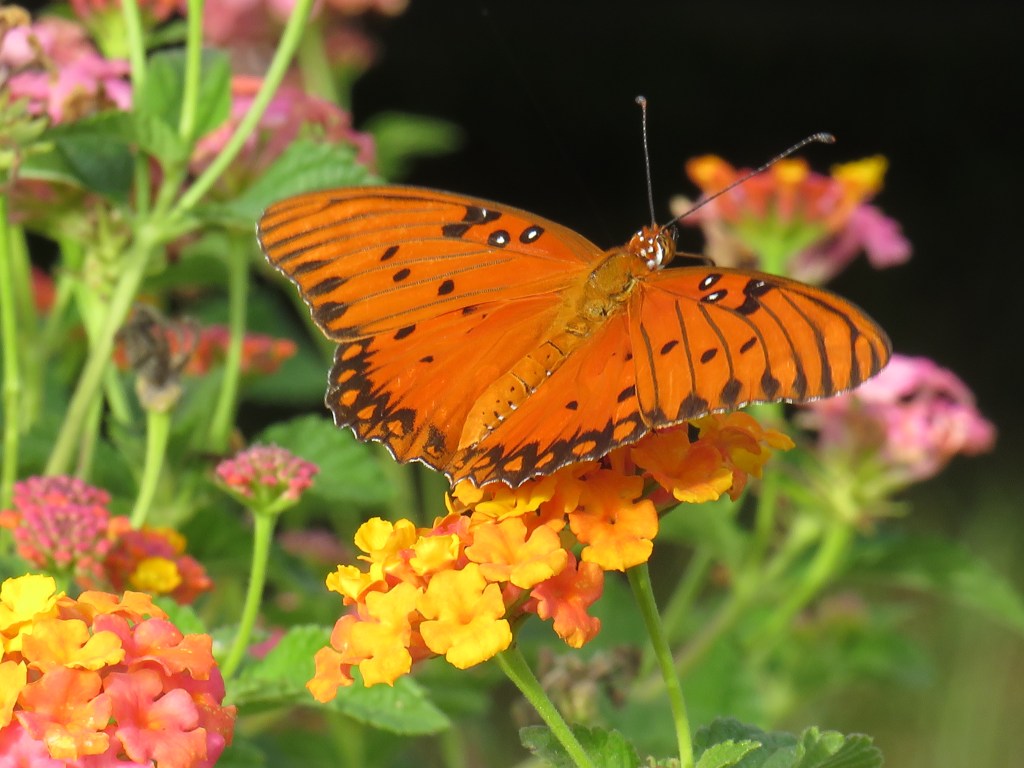Grant: Gulf fritillary butterflies
Published 5:10 am Monday, July 7, 2025

- Gulf fritillary butterflies are common in East Texas.
One of the most eye-catching butterflies flitting about East Texas gardens during summer and fall is the Gulf fritillary. With brilliant orange wings marked by black on top and shimmering silver spots below, it is sometimes mistaken for a monarch. But unlike monarchs, which migrate through East Texas during spring and fall on their way to and from Mexico, Gulf fritillaries are here all summer, especially where their favorite host plants, passion vines, are present.
The Gulf fritillary belongs to a group of tropical butterflies known as longwings or heliconians. It is a warm-climate species that ranges from the southeastern United States down through Central and South America. Its life cycle is intimately tied to the genus Passiflora, better known as passion vines, which are also tropical in origin.
In East Texas gardens, the two species of native passion vines are the maypop (Passiflora incarnata) and the delicate, little yellow passionflower (Passiflora lutea). These vines are members of a large tropical and subtropical family that includes over 500 species, most native to the Americas. In their native range, Gulf fritillaries evolved alongside these vines, forming a long-standing ecological relationship.
Trending
Adult Gulf fritillaries are drawn to passion vines for reproduction. Female butterflies will circle a passion vine before laying tiny golden eggs on the stems, leaves, or tendrils. In a matter of days, those eggs hatch into bright orange, black-spined caterpillars that begin feeding and growing. The caterpillars rely solely on Passiflora species to complete their life cycle. Without these vines, the butterflies cannot survive from one generation to the next.
This tropical pairing coexists well in East Texas, especially in gardens and wild areas with sunny, open spaces. Passiflora incarnata, often called maypop, is a perennial vine that dies back in winter and returns vigorously each spring. Its intricate lavender-and-white flowers bloom throughout the summer, often followed by large, green egg-shaped fruits. It spreads by underground runners and thrives in hot, humid weather. Passiflora lutea, on the other hand, is more shade tolerant, with tiny yellow-green flowers and smaller foliage. Both are technically ideal for attracting Gulf fritillaries though I rarely see their larvae on yellow passion vine. ‘Incense’ passion vine is a hybrid that includes Passiflora incarnata as one parent and though not as attractive to Gulf fritillaries as our straight native will still support enough for kids and adults alike to observe.
In addition to their role as host plants, passion vines also support native pollinators. Their flowers are highly specialized and adapted for pollination by large-bodied native bees. Some species require the weight of carpenter bees or bumble bees to trigger the mechanism that releases pollen. Passion vines also produce extra-floral nectaries (tiny nectar-producing glands located on leaf stems or petioles) which attract ants that help defend the plant from herbivory.
Together, Gulf fritillaries and passion vines offer a glimpse into our long-ago tropical past, right in our own backyards. If you want to enjoy these butterflies in your garden, plant a few and watch this true nature show with your kids.
— Greg Grant, Ph.D., is the Smith County horticulturist and Master Gardener coordinator for the Texas A&M AgriLife Extension Service. He is the author of Texas Fruit and Vegetable Gardening, Texas Home Landscaping, Heirloom Gardening in the South, and The Rose Rustlers. You can read his “Greg’s Ramblings” blog at arborgate.com, read his “In Greg’s Garden” in each issue of Texas Gardener magazine (texasgardener.com), or follow him on Facebook at “Greg Grant Gardens” or “Rebel Eloy Emanis Wildlife Sanctuary.” More science-based lawn and gardening information from the Texas A&M AgriLife Extension Service can be found at aggieturf.tamu.edu and aggie-horticulture.tamu.edu.






